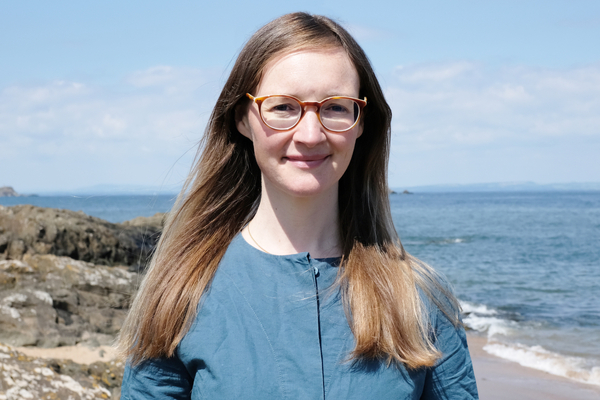Where does the intersection of people, place and net zero reach its sweet spot?
The UK market for net zero/decarbonisation has evolved rapidly since 2020, mostly stimulated by targeted government interventions including pump-priming the decarbonisation of the poorest housing through a variety of grant-funding initiatives like Social Housing Decarbonisation Fund and Home Upgrade Grant.
The Public Sector Decarbonisation Scheme (PSDS) and targeted regional funding have also built capacity, capability, knowledge and supply chain viability. Whilst progress has been demonstrably exponential, there have inevitably been many lessons learnt and the sector will continue to grow and mature at speed over the remainder of this decade on the path to net zero.
Turner & Townsend (T&T) has been at the forefront of many of these initiatives including managing several iterations of the Technical Assistance Facility (TAF) on behalf of Department of Energy Security & Net Zero (DESNZ) and Salix Delivery Partner (DP) to support local authorities and social housing landlords to bid for and deliver billions in retrofit grant funding. Additionally, T&T has led the ground breaking Retrofit Accelerator – Homes (RA-H) and Retrofit Accelerator – Workplaces (RA-W) for the Greater London Authority (GLA) as well as a host of other regional programmes and specialist solutions for healthcare, higher education and public buildings plus in the private sector for real estate (offices, warehouses, factories, utilities, airports and other infrastructure) across the UK. Often partnering with other consultancies, there is a strong drive for Turner & Townsend and leading practices to be both supplier and innovator to drive transformation.
We have undoubtedly reached an inflection point, partly led by increased capability client-side and partly through the proven market opportunity which is stimulating major contractors to see beyond the Cinderella image of retrofit. Main contractors are pulling through supply chains, who can finally see procurement routes and scaled opportunities to further drive innovation and investment. Finally, despite bumpy national policy, devolved agendas are flourishing as regional and local government see that sustainability is essentially an all-encompassing approach to resolving multiple complex issues, from helping them to meet carbon reduction targets and improve resilience to dealing with inequality and increasing local skills by creating long-term, well-paid green jobs.
So where does this intersection of people, place and net zero reach its sweet spot? Those who follow Kate Raworth’s doughnut economics, or the principles of the Sustainable Development Goals (SDGs) will be well-acquainted with the intersections of all the components of socially, environmentally and economically equitable places. In most regions this is now manifesting itself as Net Zero Neighbourhoods, Liveable Neighbourhoods, in London, Future Neighbourhoods 2030 and in Scotland, Local Living & 20-minute Neighbourhoods.
There is a simple reason for this move to devolved and regional leadership in the pursuit of net zero. Whilst national policy plays a pivotal role in setting the context, especially with systemic requirements, each region’s challenges need an integrated approach to create community buy-in. In this context, community encompasses where and how people live alongside the business/industrial communities, with the public sector playing a crucial intersectional role.
Major public estates such as universities, hospitals and local authorities are also creating the capability and business case/investment evidence for commercial entities to decarbonise their operations. This is very appealing to the investor community looking for low-risk, long-term opportunities that underpin and enhance their Environmental Social Governance (ESG) scores. Additionally, public sector procurement is increasingly leveraging their opportunity to select from more sustainable and responsible suppliers, further driving transformation through bid compliance.
Meanwhile there is cognisance that data is required to create clear baselines and to evidence the multi-faceted paybacks of better health, educational and economic outcomes that provide the indisputable business case for the return on investment per £ invested in sustainable interventions. Digital solutions and the ability to share and learn from big data looking across regions and sectors, further underpins these more strategic, multi-sectoral approaches. Large-scale social and low-income private housing is creating playbooks to decarbonise the most common and complex archetypes and creating the economies of scale and supply chains to roll out multi-tenure solutions on an area or street-by-street basis. We are at the vanguard of this process in 2024 as we learn from pilots whilst evolving to more holistic solutions. Along with integrated thinking comes the realisation that at community level, overheating and flood risk adaptation should happen concurrently. Improvement to green spaces and biodiversity gain further uplifts community opportunities for environmental enhancement and resilience. And whilst the buildings and natural environment are being upgraded, why wouldn’t you look at connectivity and ensure that the local infrastructure encourages active travel and public transport to ensure optimal air quality and healthier people?
Whilst many of these interventions have happened in a disconnected way responding to crises such as fuel poverty, flooding or chronically poor air quality – the idea that all these solutions can combine to create more liveable, productive and healthier places is finally leading to the view that net zero or sustainable towns and cities is just another way of expressing levelling-up and safeguarding of future generations.
This agenda needs clear cross-party support with long-term horizons. We all want cleaner, safer, healthier and more productive places; the challenge is to ensure there is a mandate to put placemaking at the heart of the agenda, and that this is fully understood and championed by everyone.
In terms of what the next time-horizon brings – we expect to see more market collaboration, with the requirement for fully-integrated net zero solutions crossing all sectors and all disciplines from transport/travel, water, waste and local energy, with essential environmental solutions including natural flood remediation and biodiversity to enhance green spaces – all underpinned by decarbonisation to normalise the aspiration of better, healthier and liveable cities.
Sarah Daly is associate director, sustainability at Turner & Townsend and editor-at-large for this programme of work.
Our cities, placemaking, living and the net zero challenge programme is supported by E.ON, Equans and Mears



